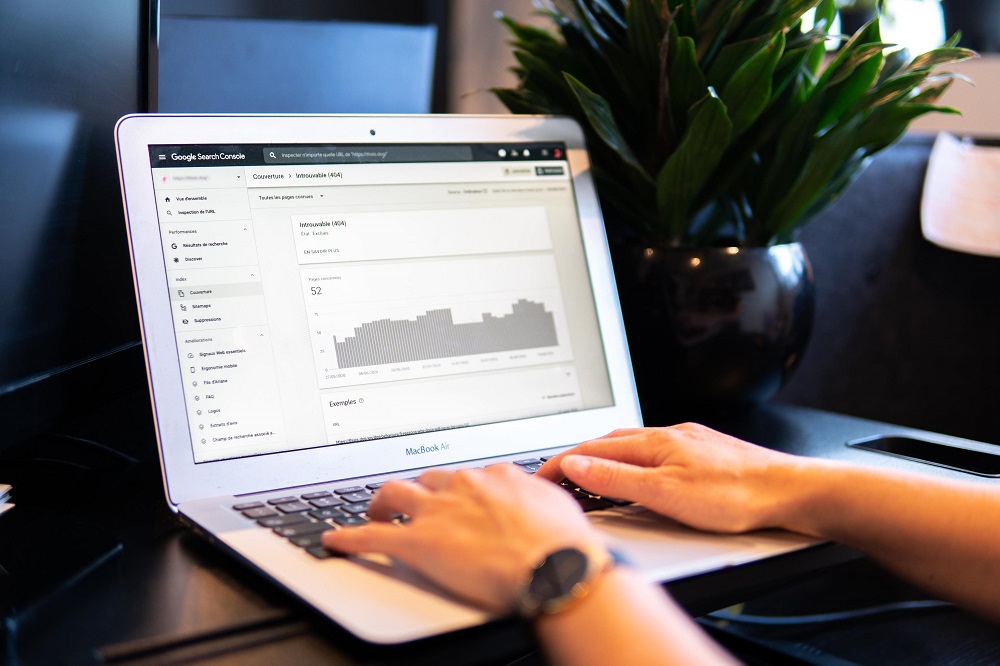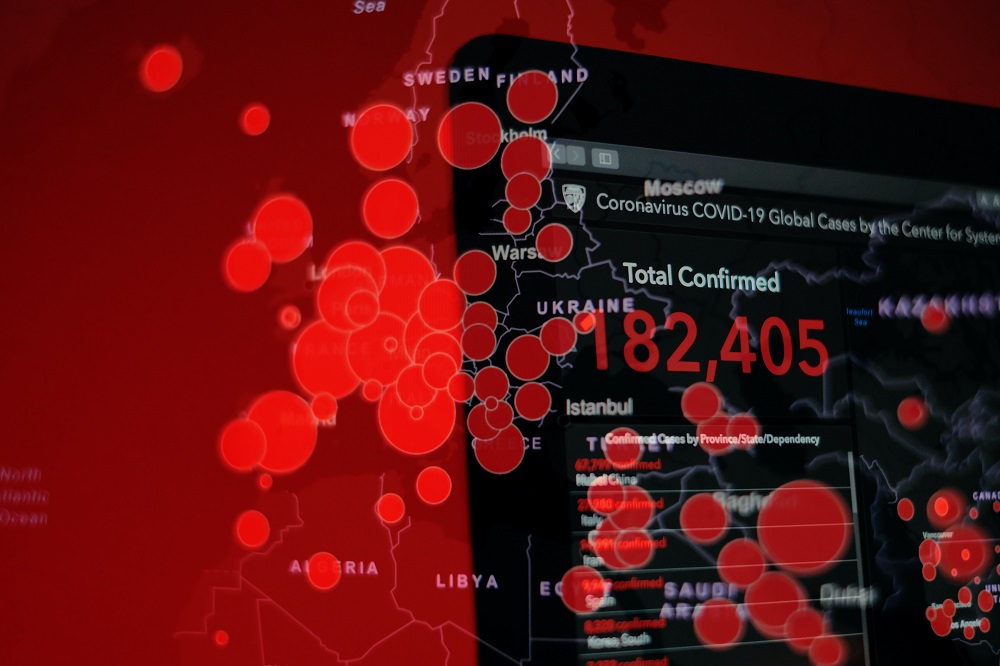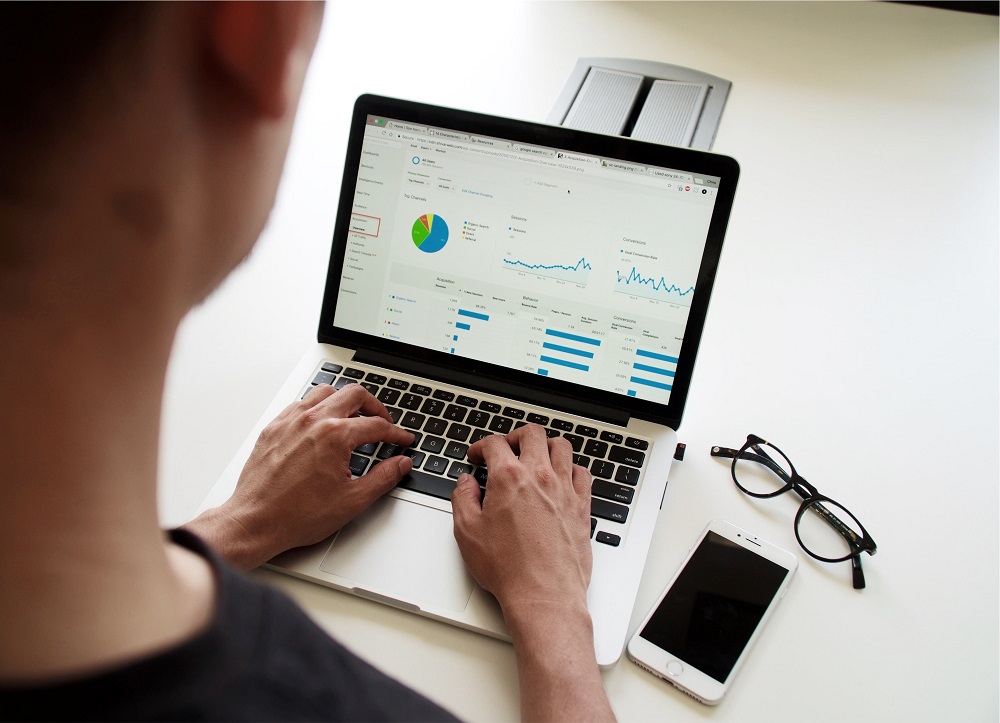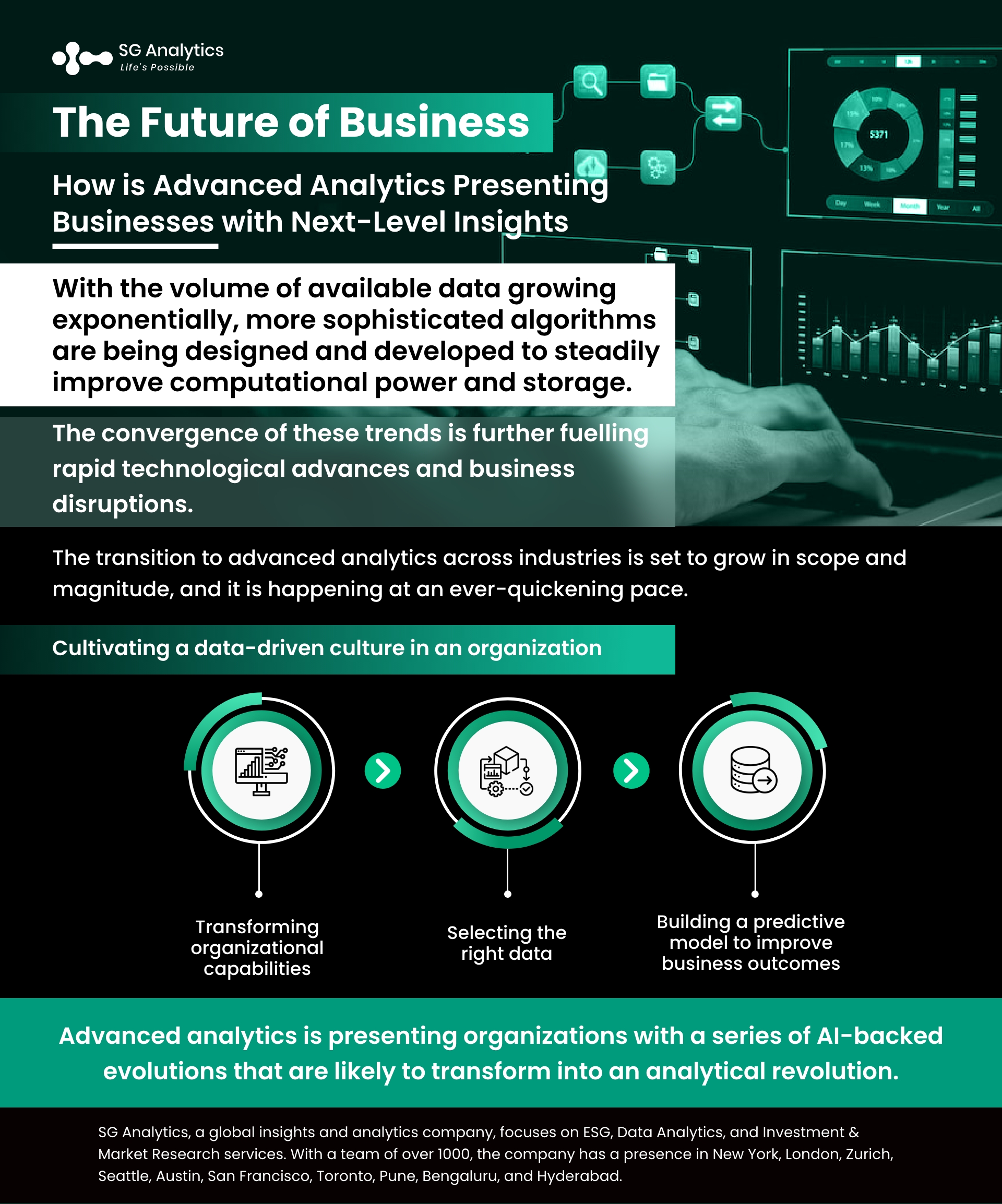In today’s digital world, businesses are bombarded with data. Generating the right insights from this large pool of data enables businesses with informed decision-making, thereby driving growth. With the rise of business intelligence, data, and analytics technologies surfacing, businesses are feeling the need to adopt and gain competitive advantage.
With exponential data disruption, more sophisticated algorithms are being designed and developed to steadily improve computational power and storage. The convergence of these trends is further fueling rapid technological advances and business disruptions.
Industry Revolution 1.0 to 5.0 - Here's What You Need to Know
The world is opening up to the endless possibilities of artificial intelligence (AI) as AI-driven technologies are slowly becoming a reality, as well as facilitating whole-business functions and processes. AI analytics is increasingly being integrated for important data-crunching work and for business reinvention altogether.
While experts have been stating that “Industry 5.0” is now underway, with AI-powered tools and platforms taking on the repetitive tasks for organizations, let's uncover what the journey from Industry 1.0 to Industry 5.0 looks like and how it drove change.

Industry 1.0, the original Industrial Revolution, started in the late 18th century in Britain. It was the very first-time mass production was made possible by using water and steam power instead of manual physical labor. Manufacturing blossomed with the power of machines, thus revolutionizing society altogether.
Read more: Trends in Big Data Analytics: Forecast for 2023
Then followed Industry 2.0, which took place a century later. Assembly lines and the use of oil and gas, along with electric power, stimulated the manufacturing industry to level up. With automation entering the manufacturing process, industries were able to mass produce, thereby catapulting them on the path of growth.
The advent of computers in the mid-20th century kickstarted Industry 3.0, where digitization, telecommunications, and data analysis impacted manufacturing. Automation advancements, along with the use of programmable logic controllers, helped in automating more processes.
This further led organizations on the path of Industry 4.0 or the Fourth Industrial Revolution. Industry 4.0 officially started between 2011 and 2016, as the manufacturing sector was hit with the wave of technological advancement brought by data and the creation of smart machines. The world has been encountering the Fourth Industrial Revolution or Industry 4.0, which can be defined by a mix of artificial intelligence (AI), advanced robotics, as well as the Internet of Things (IoT). Machine learning is now set to bring a new phase to this ongoing industrial revolution.

Industries are today experiencing a radical shift that many are already calling Industry 5.0. The advent of the COVID-19 pandemic accelerated this shift. The Fifth Industrial Revolution is on the path of maturing and transitioning into a digital experience, one where humans are back to steering change. However, irrespective of the human-centric approach, experts believe that the fifth industrial revolution is set to further fuel technology. Machine learning tools are also presenting innovative solutions to undertake repetitive tasks. AI-powered tools equip organizations with the potential to minimize their employee stress while maximizing productivity.
This rising convergence of human cognition, along with artificial intelligence and machine learning, is set to present a slew of new use cases for industries in the near future. These new possibilities will further equip businesses to offer immersive experiences to their consumers in ways that were unimaginable before Covid-19. With AR and VR machine learning tools, AI-powered bots will also play a significant role in Industry 5.0, empowering manufacturing to optimize outcomes, thus minimizing the need for human intervention.
Read more: Top Data Analytics Certification Programs to Explore in 2023
Advanced Analytics
A term for leading-edge techniques, advanced analytics uses AI and machine learning. While data analytics offers insights drawn from raw data, advanced analytics presents unique insights collated from untapped or unstructured data.

Advanced analytics goes beyond traditional business intelligence (BI) and data analytics strategies. It encompasses mature approaches, including predictive modeling, machine learning (ML), and process automation. It makes use of mathematical algorithms to identify patterns, predict outcomes and associated probabilities. Advanced analytics include data mining, pattern matching, forecasting, data visualization, semantic analysis, and sentiment analysis, as well as complex event processing and neural networks. With advanced analytics, organizations can predict future trends along with the likelihood of certain events.
Gartner stated that advanced analytics is the autonomous analysis of data or content by employing sophisticated techniques and tools that are beyond traditional business intelligence (BI) in order to discover deeper insights and make new predictions. With AI models continuing to evolve, the amount of data being fed to the system to help them learn is also increasing. As a result, algorithms are getting better, and companies are able to use even more data to create greater business value.
While classic descriptive analytics concerns characterizing components the way they are, advanced analytics identifies and presents future outcomes and generates recommendations for the best courses of action.
Benefits Of Advanced Analytics
Today's complex business decisions are supported by a comprehensive understanding of operations, workforce capabilities, product performance, as well as consumer behavior. With investments in advanced analytics, businesses are experiencing substantial enhancements within their organizational operations. It presents businesses with capabilities to consolidate the accumulated data and create different business strategies to increase visibility and transparency across operations as well as to facilitate day-to-day decisions in real time. Organizations are better able to tailor consumer experiences while also mitigating the risk of customer churn.

Some of the high-level samplings benefits of how organizations are benefitting from advanced analytics are as follows:
-
Enhanced capacity for end-to-end supply chain visibility
-
Delivery of more refined and accurate insights that enhance day-to-day business decision making
-
Elimination of duplicate data modeling
-
Better identification of threats like security breaches
-
Improving the efficiency of data science-related processes
-
Fostering the identification of data monetization schemes
-
Accelerating agility by enabling organizations to predict and respond to future events
-
Access to crucial, evidence-driven guidance
Read more: Establishing a Data-Driven Cybersecurity Strategy for Business Growth
Integrating Advanced Analytics into Company Operations in the Post-Pandemic Business Scenario
The COVID-19 pandemic, followed by geopolitical tensions due to the Ukrainian invasion by Russia, proved challenging for global business. The crises resulted in notable declines in value chain productions, and waves of layoffs started gripping multiple industries.

The global economy experienced severe blows due to the Russia- Ukraine war, with significant disruptions in trade, food, and fuel price shocks. All factors contributed to high inflation along with subsequent tightening in global financing conditions. Higher interest rates, falling stock prices, supply chain crises, and a delicate state of geopolitics were perceived as vital indicators.
The overlapping war crises, the ongoing pandemic, and the surge in food and fuel prices served as painful reminders for governments globally, compelling them to take effective measures in the face of shocks and long-term challenges. In such unpredictable situations, making sound decisions for businesses was emerging as a major challenge, and consumer data was considered vital to making it to the other side of the crisis.
While large enterprises were equipped with significant resources to handle the rising business risks, enterprises with smaller teams and minimal resources took unexpected hits to their environments. These factors made it vital for organizations to gather data related to their customers and analyze it for critical business decisions.
For businesses to emerge strongly in the market in this post-recession scenario, advanced analytics tools offered them surplus resources to monitor their operations. Advanced analytics tools equipped them with a comprehensive outline of their consumer demographics, behaviors, and other parameters for consumer engagement and retention, even in times of economic crises.
Read more: Artificial Intelligence and the Downsides of AI Data Collection

Roadmap to Becoming an Intelligent Enterprise
The transition to advanced analytics across industries is set to grow in scope and magnitude, and it is happening at an ever-quickening pace. Organizations with higher overall growth in revenue and earnings are likely to receive a significant proportion of that boost due to data analytics.
Organizations are set to transform themselves into truly intelligent enterprises with the integration of advanced analytics and smart machines in the cognitive sense for data-driven decision-making. To further advance on this digital transformation journey, it is imperative for organizations to strategize a road map for growth.
-
Transforming organizational capabilities: Organizations often face a disconnect between existing technology capabilities and evolving digital culture. To deploy advanced analytics successfully, they are integrating digital approaches to align their company culture with digital tools in order to design and adopt modern management changes that work with vendors and consultants as well.
-
Selecting the right data: With the volume of organizational data growing on a day-to-day basis, it is imperative for organizations to gain deeper insights and accelerate innovations. With advanced analytics, they are identifying the useable data to enhance their operations, customer experiences, and business strategies.
-
Building a predictive model to improve business outcomes: Company data is critical for improving business performance as well as gaining competitive advantage. Advanced analytics models allow businesses to anticipate and optimize the desired outcomes as well as improve their business performance.
Companies are further tempering their expectations about AI-backed technologies to move forward aggressively, and advanced analytics is presenting them with a series of small evolutions that are likely to transform into an analytical revolution.

The rapid advancements in artificial intelligence (AI) technology in today's market have compelled employers to think of automated processes to make work faster and more efficient. However, on the other hand, employees probably have the looming fear of losing their jobs and being replaced by a machine. AI is designed to make manual labor more effective and quick, and it cannot override the need for human inputs. And with AI changing how companies function, many believe that employees who do this work are also likely to change.
An essential element to take into consideration to integrate a truly intelligent type of future of work is to develop a workforce where both humans and machines will have equal roles to play, thereby leading to the more efficient execution of jobs. Regardless of how AI systems are programmed, it is unlikely that humans will develop a strong emotional connection with these machines. Hence, it is safe to state that AI cannot replace humans, particularly as connecting with others is vital for business growth.
We at SGA are exploring new horizons to create augmented AI that enables efficient and faster output. With a commitment to businesses and society, we are driven to create a world of AI that functions in unions with human existence.
With a presence in New York, San Francisco, Austin, Seattle, Toronto, London, Zurich, Pune, Bengaluru, and Hyderabad, SG Analytics, a pioneer in Research and Analytics, offers tailor-made services to enterprises worldwide.
SG Analytics - Global Insights & Analytics Company focuses on leveraging data management & analytics, and data science to help businesses discover new insights and build strategies for business growth. Contact us today if you are looking to make critical data-driven decisions to prompt accelerated growth and breakthrough performance.







